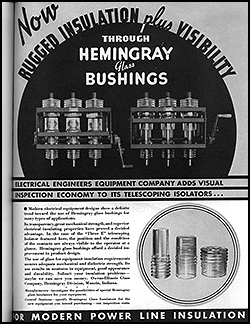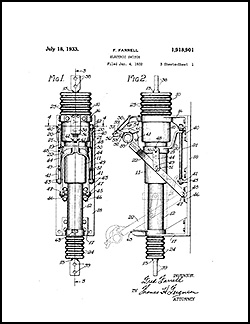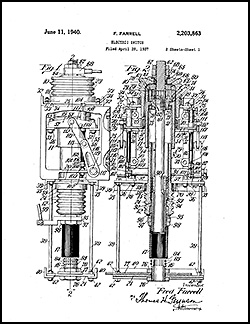
- Home
- Special Interests
Glass Bushings

Hemingray made several kinds of glass bushings for custom applications. Some have known purposes, while others remain a mystery for now. None are currently assigned CD numbers, so I created the BT (Bushing & Tube) numbering system to catalog them. It is important to note that Brookfield, a Hemingray competitor, also manufactured many types of bushings. Any bushings embossed with an "R-50XX" series number are Brookfield products.
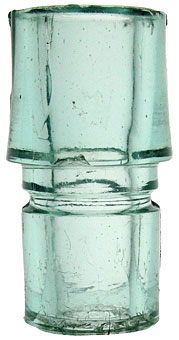
One such example of an unknown usage is the piece on the left, which is likely a bushing. While we don't know for sure what it was used for, we do know that one of these pieces was dug out of the Hemingray Dump by Roger Lucas in 2008 (photo here). The measurements are 4 1/4" high by 2 1/4" wide at the widest point in the middle. It has a tapered bore, with the inner diameter measuring 1 1/4" at the top and 1" at the bottom.
It comes in a typical Hemingray ice aqua color, and there are at least four specimens known to date. It has never appeared in any Hemingray catalogs (that we know of). Does anyone else out there have one or know more info about this piece? Contact me!

This piece was likely a switch bushing. Based on the Hemingray Blue color, glass quality and other features, I believe this is likely a Hemingray product. This particular specimen has 9 ribs, measures 6" tall x 3.5" wide, and has four indentations around the base.
Switch bushings were typically used in early 1900s power houses on control panels which were large slabs of marble. A large knife switch would have been attached to two of these bushings, in order to isolate or disconnect a power circuit.

This piece was likely a switch bushing. Based on the green aqua color, glass quality and other features, I believe this is likely a Hemingray product. This piece is similar to BT 2050 in measurement (6" tall x 3.5" wide) and has the same four indentations around the base. However, it differs in that it has 10 ribs, has a ground base, and also has four indentations on the top ring around the hole.
This particular specimen was removed from an interurban power house built in 1901. Switch bushings were typically used in early 1900s power houses on control panels which were large slabs of marble. A large knife switch would have been attached to two of these bushings, in order to isolate or disconnect a power circuit.
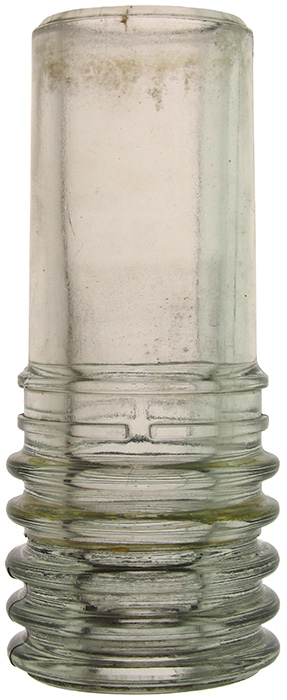
Another set of three glass bushings attributed to Hemingray was manufactured in the late 1930s/early 1940s as part of a large electrical switch assembly called a "Three E Telescoping Isolator". These glass bushings allowed for easy visual inspection of the components contained inside. The switching assemblies are tied to U.S. Patents 1918901 (July 18, 1933) and 2203863 (June 11, 1940)—see patents and advertisement below.
So far I have only been able to locate one of the three pieces, pictured here. It is clear and measures 9" high, 3.75" wide at the bottom and 3" high at the top. The inner diameter is 2.25" at the top. It weighs 4 pounds exactly. The bottom is not punched through so maybe it was never used? Three ribs up from the bottom, you can see it is actually two separate pieces that are glued together with an unknown adhesive. I purchased it several years ago on eBay as part of a small lot of common Hemingray insulators. It appeared suspiciously Hemingray to me, but it wasn't until I showed it to Hemingray historian Bob Stahr that he was able to confirm what it was.
Bob reports that these were used in certain electrical vaults in ComEd territory in Chicago, Illinois. If you happen to work for ComEd and know more about these assemblies (or better yet have one you're looking to sell), please contact me!
